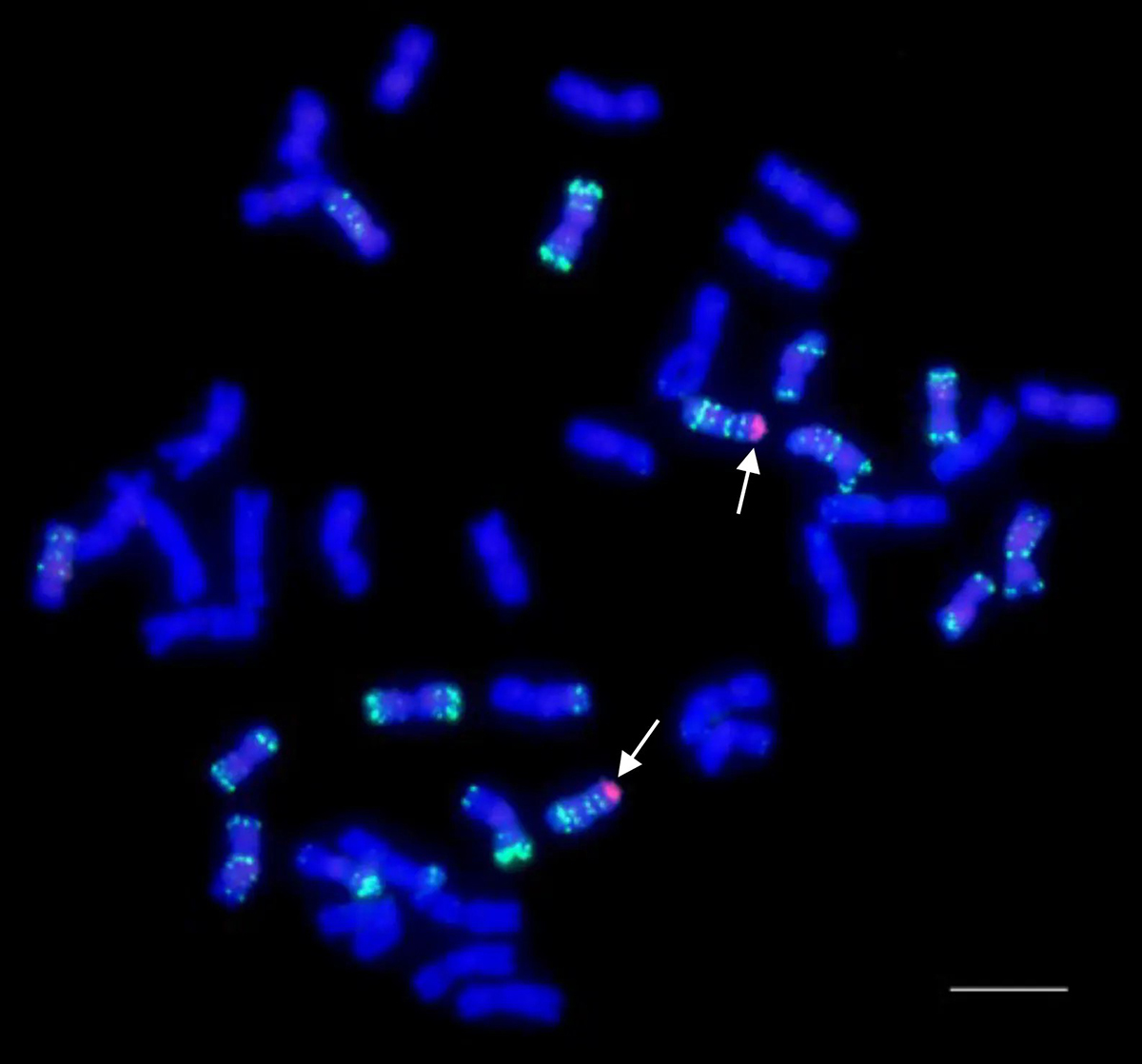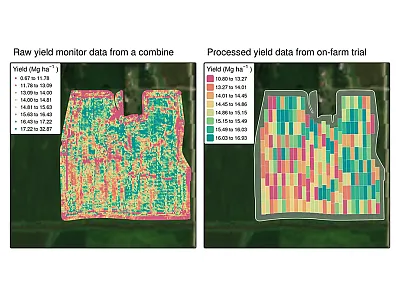FISHing for plant chromosomes

With a rapidly changing climate, scientists must dig deep into crop gene pools for climate-resilient traits. By crossing crops with distantly related plant species (wide hybridization), scientists can create new lines with desirable traits—and the tools critical for monitoring, mapping, and transferring exotic traits to elite crop germplasm lie in the chromosome.
Chromosomes are the physical basis of heredity. The study of chromosomes (cytogenetics) and chromosome engineering provides critical tools for crop improvement. But chromosomes of most crop plants and their wild relatives are small, similar in size, hard to identify, and difficult to manipulate.
A perspective article in The Plant Genome reviewed advances in molecular cytogenetic research that can aid in the identification, mapping, and manipulation of plant chromosomes. One of the most impactful advances utilizes glowing labels for chromosomal testing. Scientists taking advantage of advances in DNA cloning, genome sequencing, and florescence labeling of DNA probes developed a molecular cytogenetic method called fluorescence in situ hybridization (FISH). Using FISH, scientists can rapidly identify, map, manipulate, and monitor trait transfer in wide hybrids.
Most surprisingly, the molecular cytogenetic analysis of crop weeds revealed that organismal genomes are highly dynamic. Genes can escape chromosomes as extrachromosomal circular DNA and drive rapid adaptive evolution. These findings have profound implications for genome evolution, speciation, and crop improvement. FISH, along with other advances in molecular cytogenetics and wide hybridization, has sustained the Green Revolution gains in wheat and other crop plants.
Dig deeper
Gill, B. S. (2025). A molecular cytogenetic perspective on chromosome biology and crop improvement. The Plant Genome, 18, e70126. https://doi.org/10.1002/tpg2.70126
Check out The Plant Genome special section, “Tribute to Ron Phillips: Crop Genetics, Genomics and Biotechnology.”
Text © . The authors. CC BY-NC-ND 4.0. Except where otherwise noted, images are subject to copyright. Any reuse without express permission from the copyright owner is prohibited.










